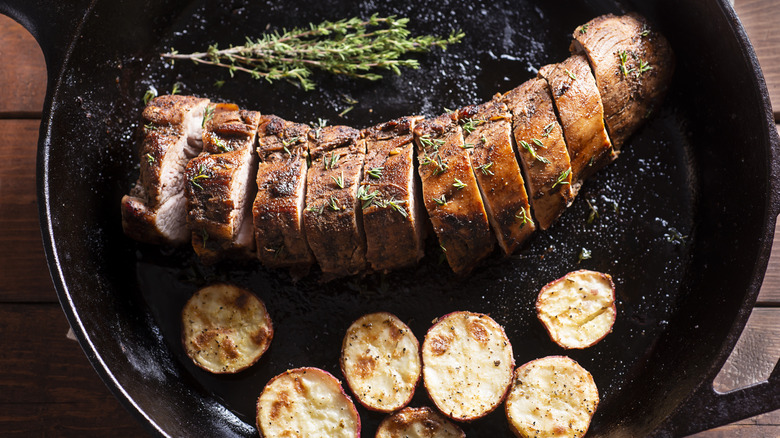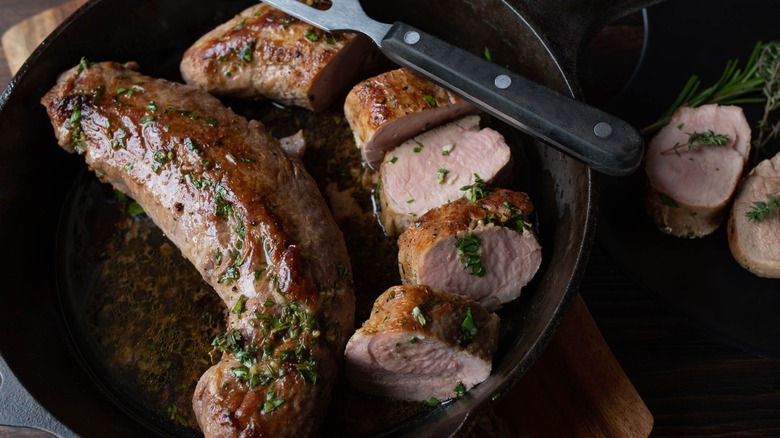The Extra Step That Gives Pork Tenderloin A Beautiful Crust
Pork tenderloin, often hailed for its tender and juicy qualities, has become a staple in many culinary repertoires. When prepared right, this lean cut of meat offers a delectable experience that rivals even the finest steaks. Achieving a sublime pork tenderloin, however, involves more than just the right seasonings. One often-overlooked aspect of perfection is the coveted crust, a layer of caramelization that adds a burst of flavor and texture to this already delightful dish. For many, the challenge lies in creating an all-around crust that envelops the pork tenderloin. Without a proper sear and the strategic flip during roasting, the result may be a well-cooked but lackluster piece of meat.
To start, consider marinating or brining your pork tenderloin; both methods enhance the meat's tenderness, flavor, and moisture retention, ensuring a more succulent final product. Once the tenderloin is prepared, it's time to focus on that all-important crust.
Searing the meat on all sides is the first step to achieving the perfect texture and flavor contrast. The simplest method is to heat a cast iron skillet or a heavy-bottomed pan over medium-high heat, add a good glug of oil, and sear each side of the meat until it forms a deep golden-brown crust. Moreover, flipping your pork tenderloin during roasting ensures even exposure to the oven's dry heat. Without this step, you risk uneven cooking — so make sure to flip it once to guarantee that every side receives its fair share of that dry heat goodness.
Nothing sears like cast iron
The choice of cookware also plays a pivotal role in creating the coveted crust on your pork tenderloin. A cast iron skillet, known for its exceptional heat retention and even distribution, is an ideal partner for pork tenderloin. The iron's ability to absorb and retain heat ensures that every inch of your pork gets the sizzling treatment it deserves.
If you'd like to step your pork tenderloin game up a notch, there is a method that goes a bit beyond simply heating the pan on the stovetop. To harness the full potential of your skillet, preheat it in the oven while the oven itself comes up to roasting temperature. This step allows the skillet to be thoroughly hot when it's time to sear the pork. When the oven reaches the desired temperature, carefully remove the skillet and place it on a full-blast burner. Add a bit of oil and the pork tenderloin to the hot skillet, and let it sear on one side before flipping it over and placing the whole affair in the oven to finish roasting.
The beauty of this scorching method is that there's no need to flip during the roasting process due to the pan's extraordinary heat. The result? A perfectly browned crust that encapsulates the succulent interior. By embracing searing, flipping, and using fine cast iron, you'll elevate your pork tenderloin to a level of culinary excellence that's sure to delight all who have the privilege of savoring your creation.

